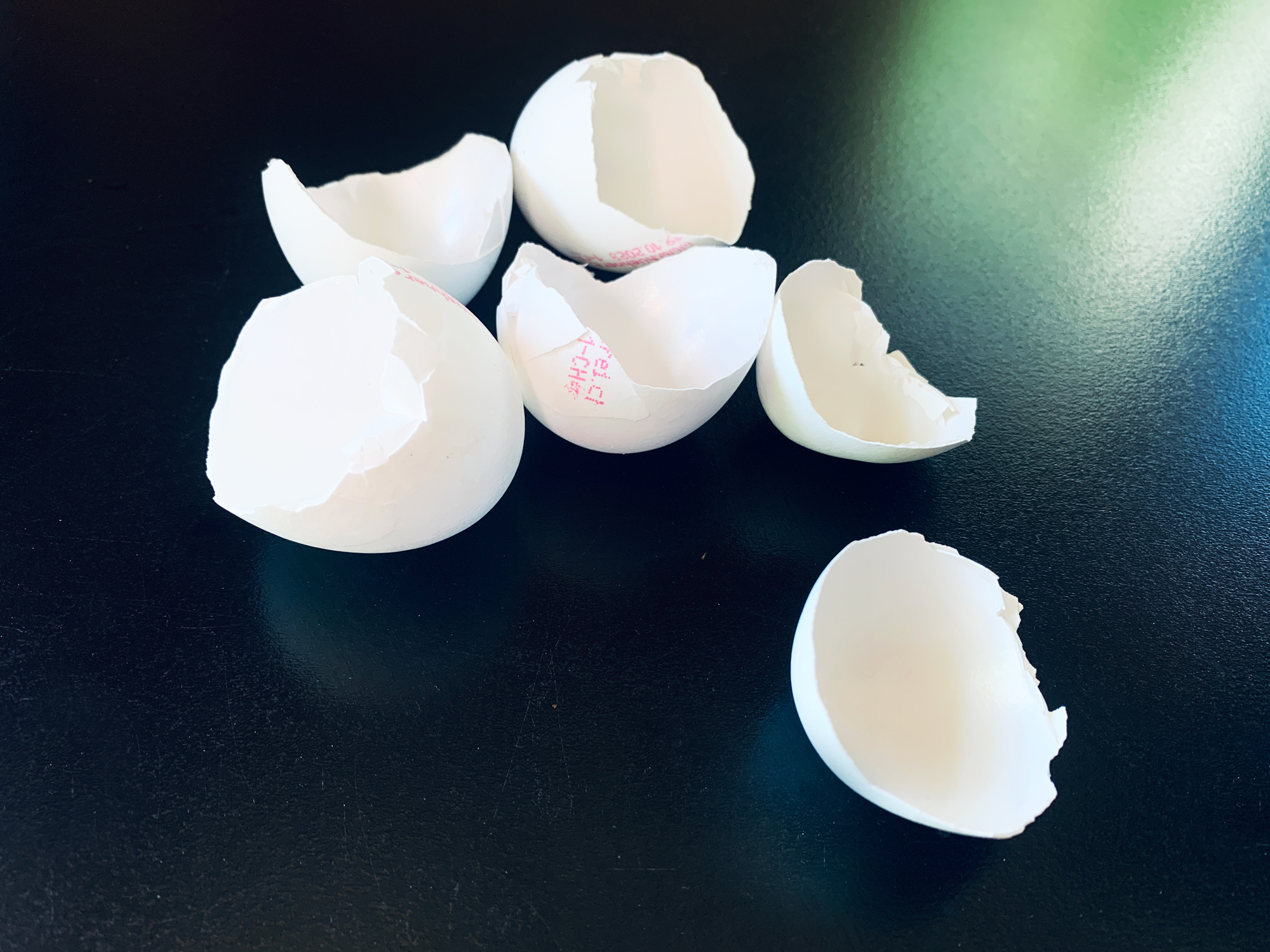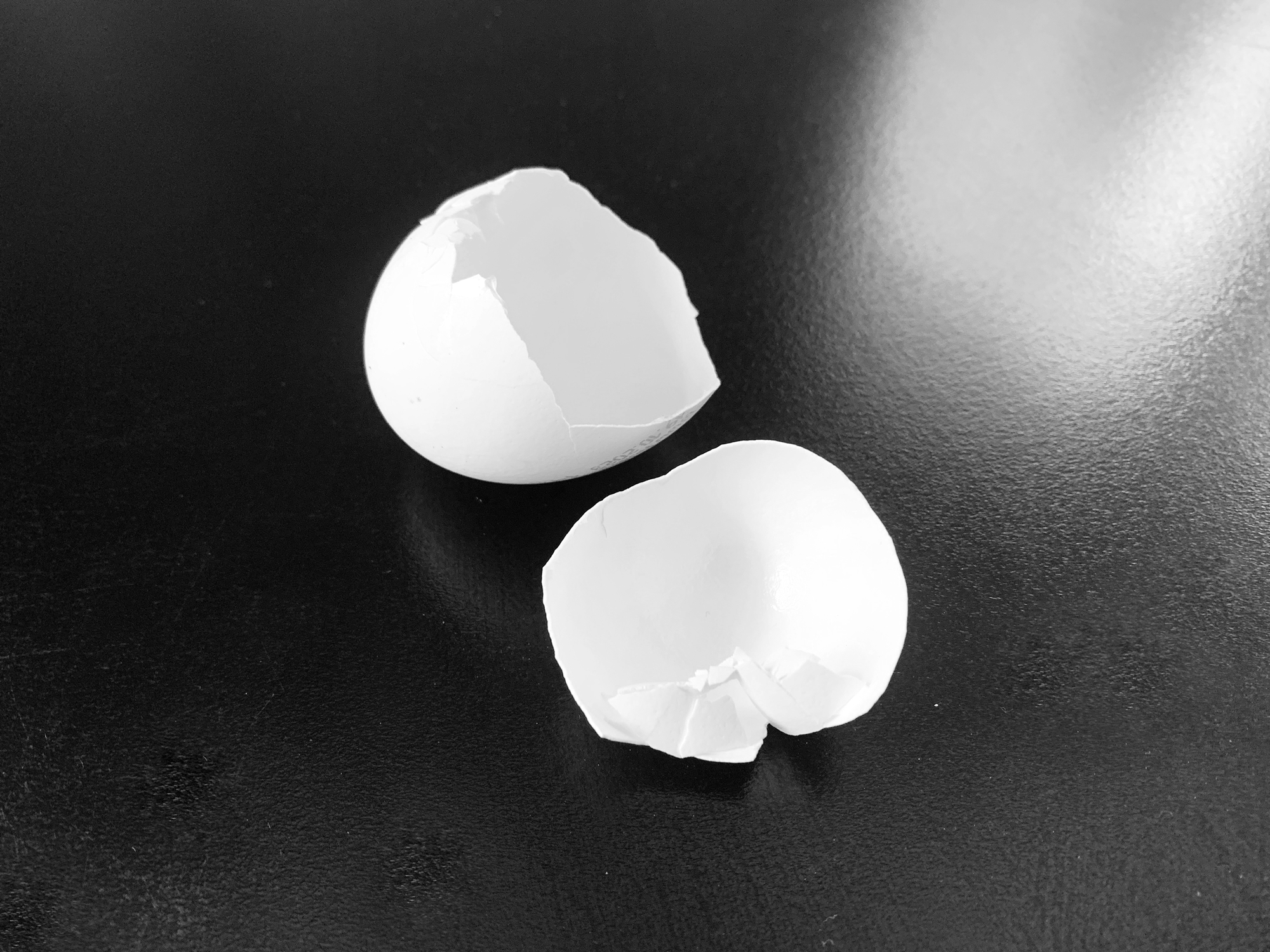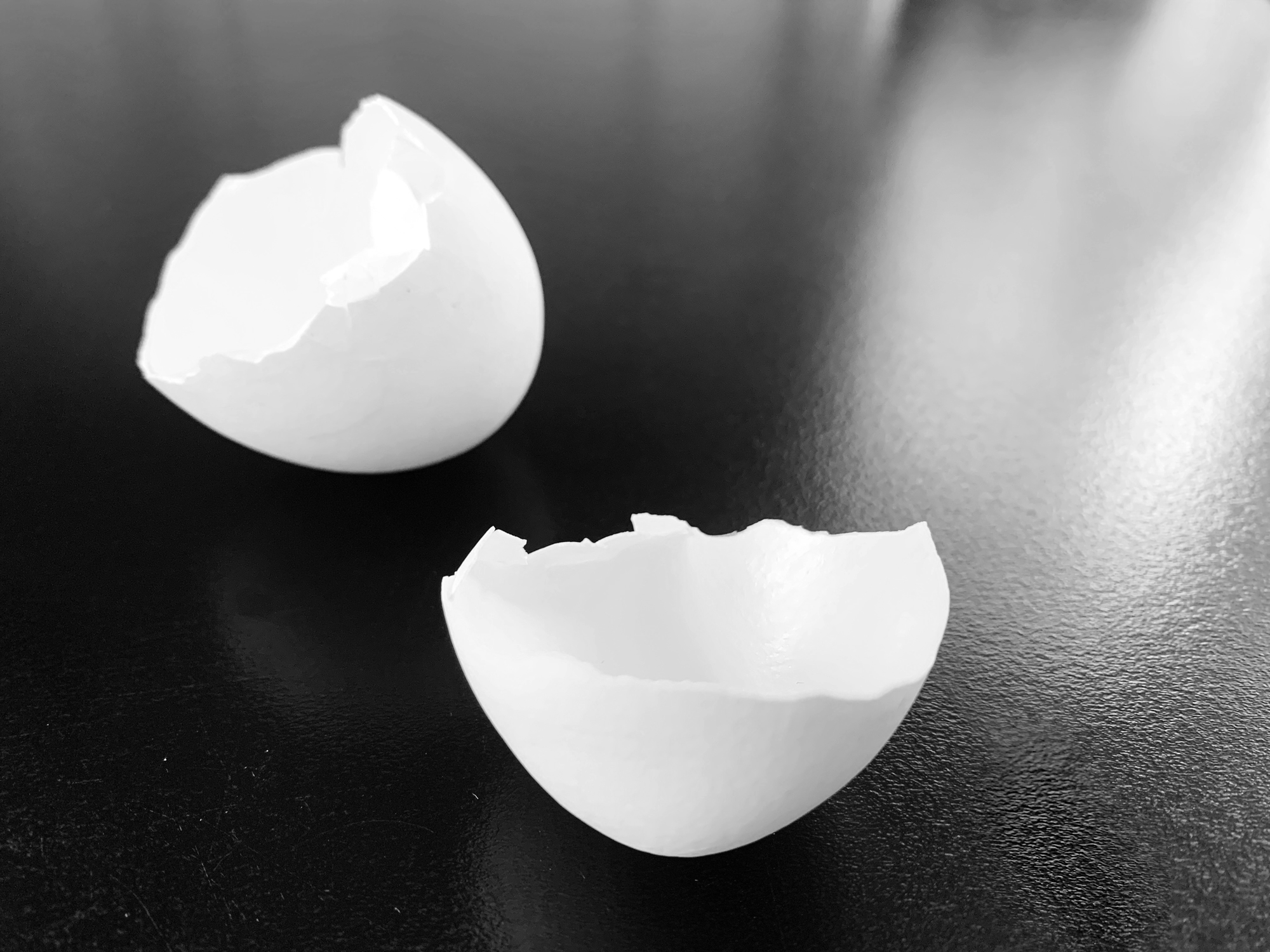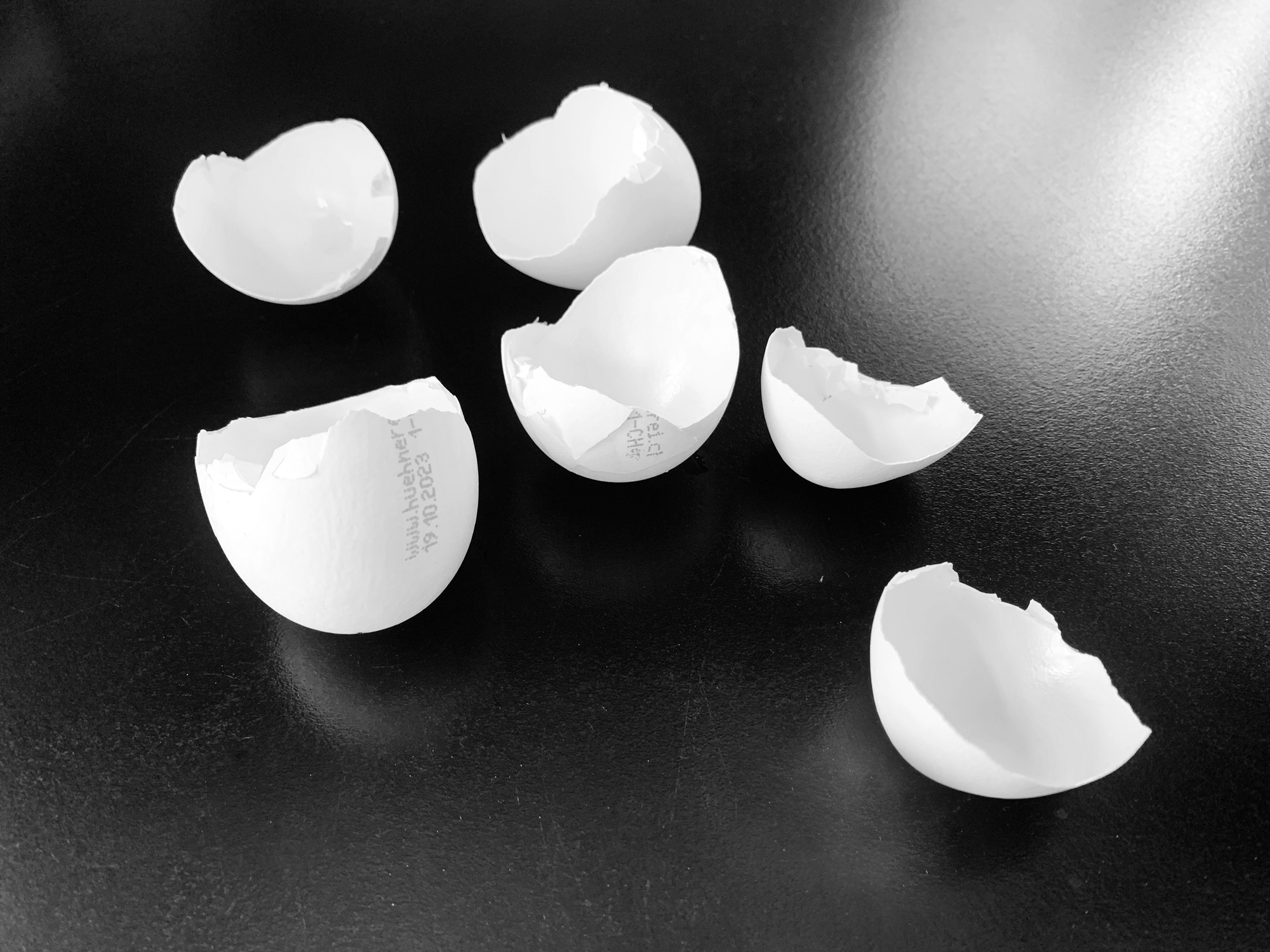Rule 9 | Set five shades
Lesson 2 | Shadow formula 132+4
15 min.
Step 1 | Browse the Metropolitan Museums online Collection
Go and pick up an egg or a ping-pong ball and try it yourself
Place the object on a white background and place it on a black background. You will see that it makes a big difference.
These eggs lay on a dark surface, this is why they have no bouncing light. Use these Pictures to set shades, as if there was a bouncing light.
Script
Hi and happy sketching.
I want to introduce you to the light formula of 132 and 4. So this is the wrong way, but I will explain to you how this works. So when we have something like a ball and we have a lightwell, that’s a square for a light from this side, then we have here at the point a light situation, and we then have a shift of two lights towards dark, which gives something like a cast shadow that is laying on the ground. But if the ground is light, meaning if this is paper white or something like that, we have not a transition of lights that goes from light to dark, but we have a situation that we have here in the middle, a darker spot and here a lighter spot.
So this means that actually, the dark part is here where we have the 90 degrees and the light spot is here where we have the 180 degrees because this is like this, that’s the light that comes from the lightwell, that is going to the surrounding surface, this bounces back from all directions to this side so that we have kind of a tone that is darker here. And then it’s lighter here. And we have the transition of one. So the lightest two, three, something in the middle. Then again, two a little bit lighter. And four for the castshadow. So this formula is actually for all this stuff that you are drawing for all kinds of objects. Sure, those are all transitions. But the inverted transition that is from one to 3 to 2 makes it more vivid.
So if you apply this formula to all your drawings, then you have more vivid drawings in the end. So please try it out. I prepared some eggshells laying on the dark surface. So try to first draw the egg shells and then try to apply this formula with the dark shadow that is here. So the lighter is here. This is the part of the egg and then something in the middle here. And then you have to set the cast shadow. So this is the darkest part, laying here and you can even try it out here. So lighter … we have it somehow here and then it’s getting lighter. It is something like this. Maybe now I have a little bit lost control of the eggshell of the broken parts of here.
Yeah, Try that for yourself. And happy sketching.
the rule is 1 3 2 plus 4
If you apply this formula, you have more vivid shades of grey. So always and for everything, get into the habit of adjusting the approach of the brightnesses of this formula.
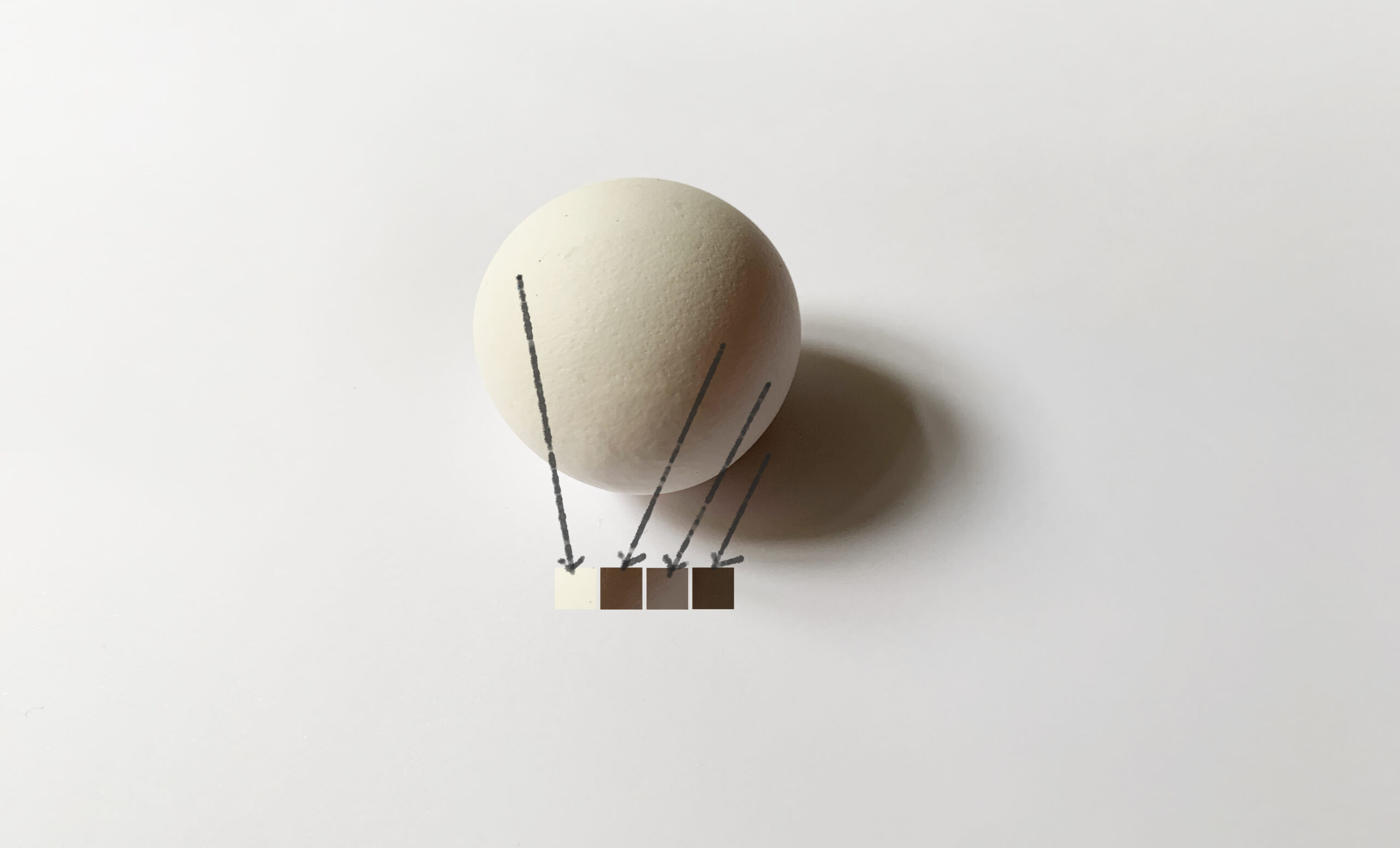
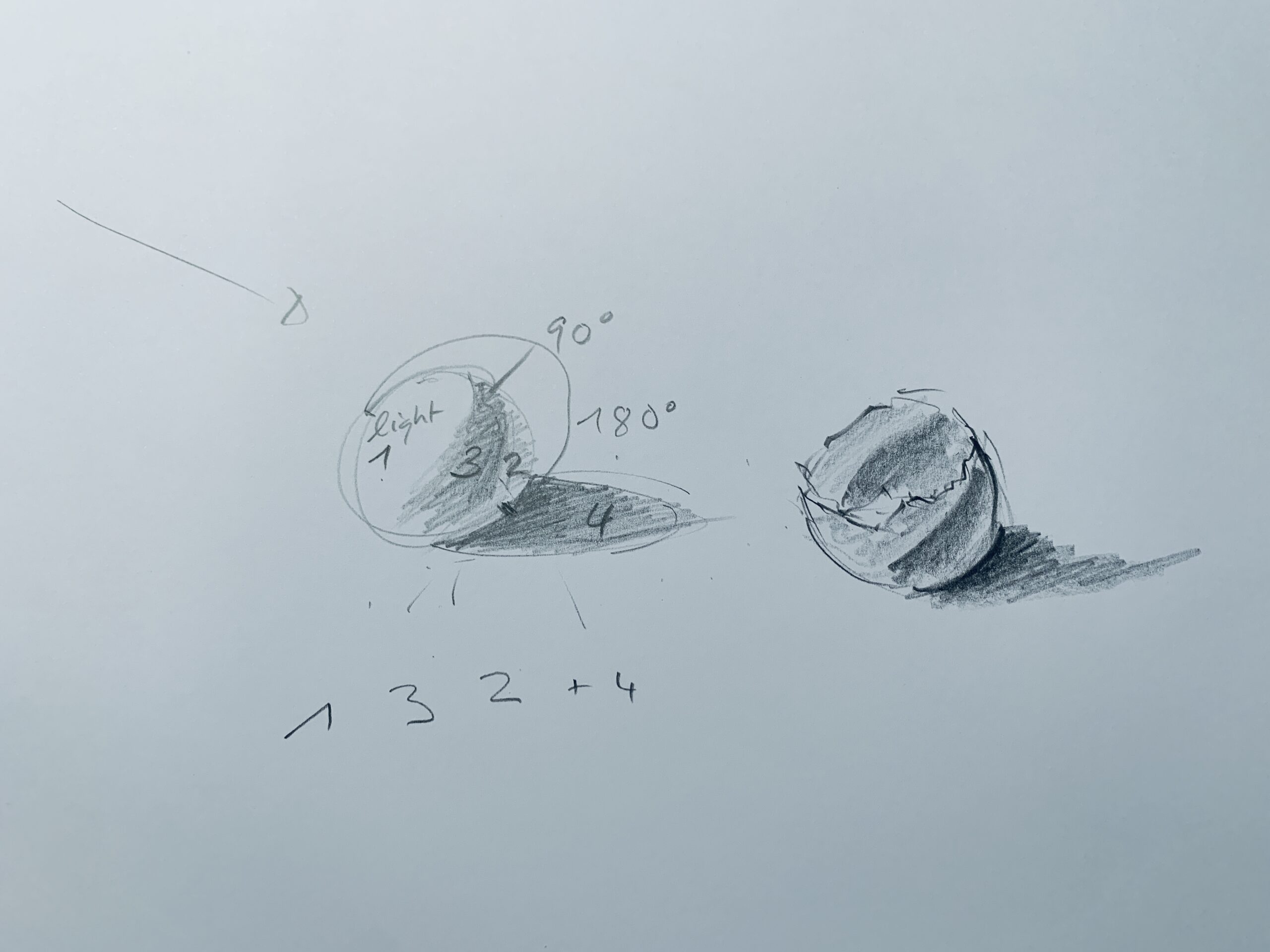
ASSIGNMENT | Sketch some egg shells and fill in the light assuming a light well and applying the formula.
To upload, use the buttons further down.

Free trial
Try one lesson and decide if you want to do the whole course. Click for the free trial ...
Certificate
If you want to achieve a certificate that proves your sketching skills, get all your information here ...

